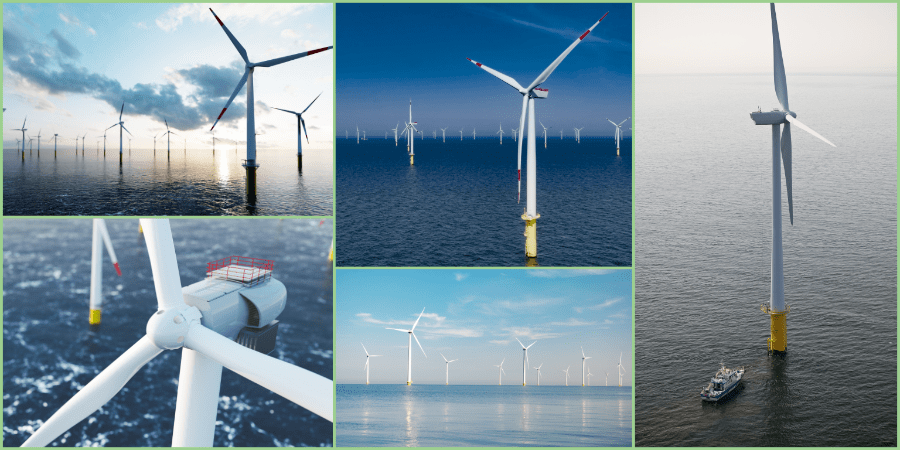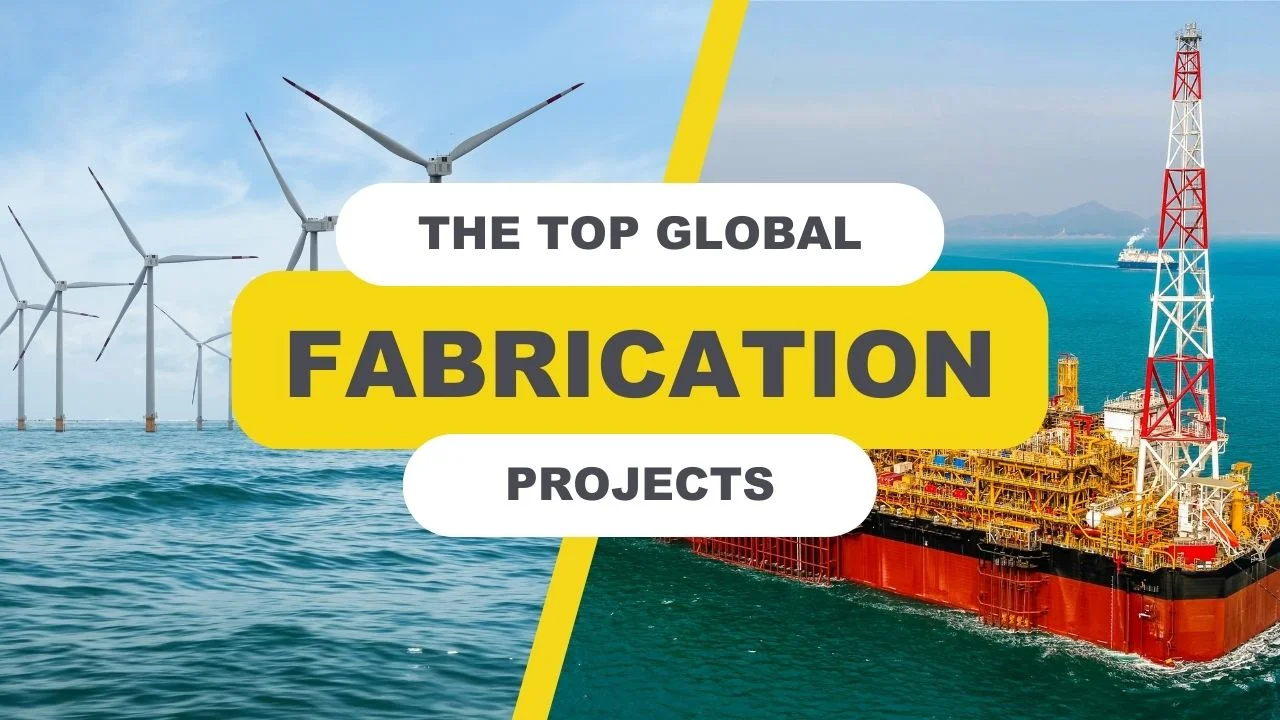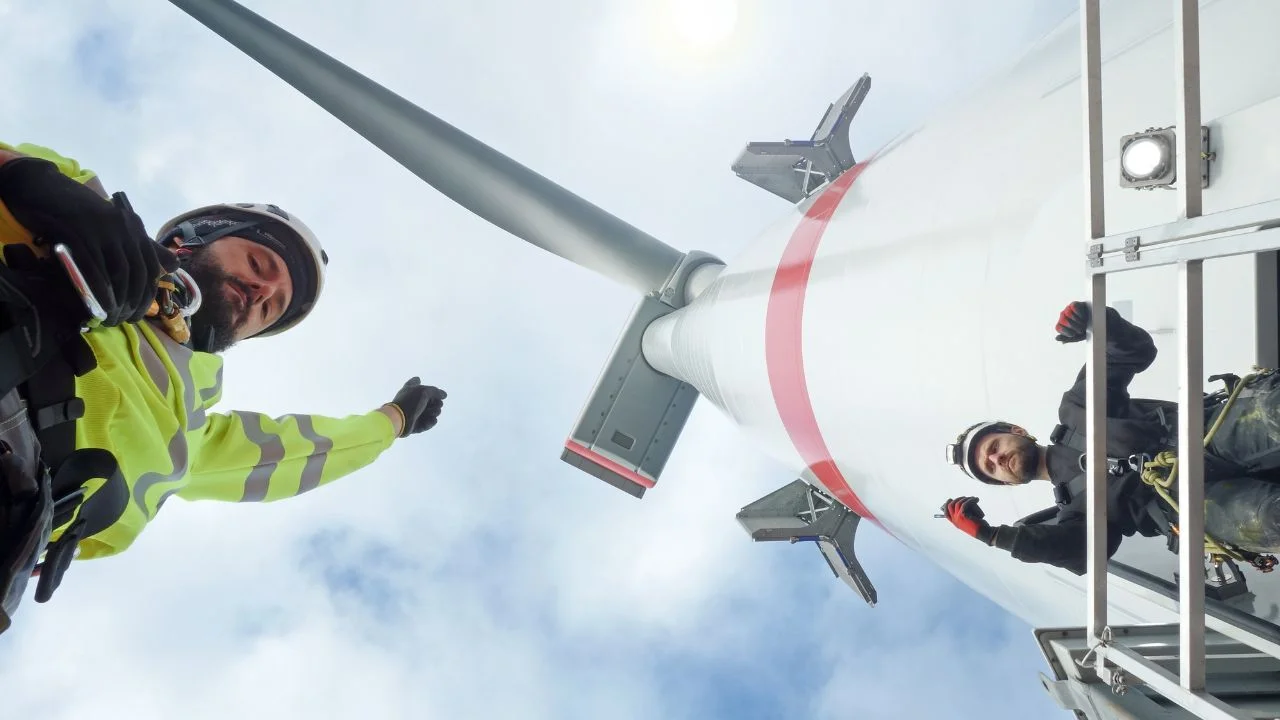The Rise Of Offshore Wind In The United States
01 Jun, 20223:49Offshore wind is set to become a major source of energy for the American East Coast, one of ...

Offshore wind is set to become a major source of energy for the American East Coast, one of the most densely populated regions in the country.
A multitude of new projects have recently been announced and are expected to dramatically increase the offshore wind capacity on the East Coast and generate enough power for millions of homes. This comes after a range of new targets and incentives were set by regional and national authorities.
So, what exactly is the status of offshore wind on the East Coast? What’s causing this new push to develop the technology in the region? And what can we expect going forward?
Slow beginning for the offshore sector
The East Coast offshore wind sector, up until quite recently, struggled to make any meaningful headway. Today, there are only two minor projects off the East Coast.
One is the Block Island Wind Project, offshore Rhode Island, which consists of five of GE’s Haliade 150-6MW offshore turbines. The other is the Coastal Virginia Offshore Wind Pilot Project, located offshore Virginia, which involves two 6MW Siemens Gamesa SWT-6.0-154 turbines.
Both projects are developed by Ørsted, with the Virginia project being a collaboration with Dominion Energy.
Some of the causes for this slow start include:
- Federal and state regulatory hurdles
- Opposition from environmental and industrial bodies
- Push back from local communities
Renewed investment and support for East Coast offshore wind
According to the American Clean Power Association (ACPA), the states of New York, New Jersey, Virginia, Massachusetts, Connecticut, Rhode Island, and Maryland have together committed to buying around 30,000 MW of offshore electricity – enough electricity to supply about 20 million households – by 2035.
They’ve done this either through the introduction of new legislation or through executive action, and 11,000 MW worth of projects have already been awarded.
The Biden presidency has also led to a renewed emphasis on the production of carbon-free energy and a push towards net-zero. Indeed, US President Joe Biden has pledged to reach net-zero for the power industry by 2035.
As part of this pledge, the president has set goals to double offshore wind capacity by 2030. This has been hugely welcome for the industry, as it had not managed to make much headway during the previous presidency.
One of the major changes enabling the US offshore wind industry to grow has been the federal investment tax credit for offshore wind which was instilled in law in December 2020. This means developers are now able to write off the capital cost of wind farms. This, in turn, enables operators to make more competitive bids at power auctions.
Now, many of the projects that were stalling are expected to progress much faster, with the Bureau of Ocean Energy Management (BOEM) anticipated to be much more supportive of offshore wind projects.
Ideal Conditions for Wind Energy Production
The East Coast presents many benefits for wind energy production. Not only is it close to major cities and areas where the electricity demand is high, but wind conditions are propitious, and the seabed is relatively shallow – making for easier installation.
This, in combination with new incentives and regulations, is what has led major companies such as Ørsted, EDF Renewables, Avangrid Renewables, Equinor, BP, and Shell to invest in the region.
Many of the projects are also able to be built far enough from the coast that they are not visible, or only during days with excellent visibility. This removes one barrier that often delays such projects, which is residents’ fear that wind farms will affect their view and thus potentially the value of their property.
Research has also been conducted to demonstrate that migrating birds that come through the area typically pass closer to the shore and higher than the turbines, meaning the wind farms will not impact the wildlife.
Exciting upcoming projects
All this new investment and interest presents huge benefits for the region. For example, current plans in the New Jersey and New York states could create nearly 40,000 direct and indirect jobs until 2030, with thousands more long-term operations and maintenance jobs.
One of the most exciting upcoming projects on the East Coast is the Vineyard Wind project, located about 15 miles off the coast of Massachusetts. It’s the first utility-scale offshore wind energy project in the United States.
Iberdrola is taking part in the development of the project, through a 50/50 joint venture between Avangrid Renewables and Copenhagen Infrastructure Partners (CIP).
Vineyard Wind, the joint venture between Avangrid Renewables and CIP, started construction for Vineyard Wind 1 – the first phase of the project – in November 2021.
62 of GE’s Haliade-X 13 MW wind turbines, the most powerful in operation to date, will be used for Vineyard Wind 1. A single rotation of a Haliade X 13 MW turbine can produce enough energy for a household for more than two whole days.
Vineyard Wind 1 will have a total generation capacity of 800 MW, capable of generating energy for 400,000 homes in Massachusetts. It’s currently the largest wind farm being developed in the USA and will prevent the emission of over 1.6 million tons of CO2/year.
The wind farm is expected to be operational by 2023.
Other projects include the:
- Coastal Virginia Offshore Wind Project, developed by Dominion Energy (2,640 MW)
- Atlantic Shores Offshore Wind Projects, developed by Shell New Energies and EDF Renewables (1,510 MW)
- Ocean Wind 1 and 2, developed by Ørsted and PSEG (1,100 and 1,148 MW)
- Mayflower Wind Project, developed by Shell New Energies and Ocean Winds (2,400 MW)
- Kitty Hawk Wind Project, developed by Avangrid Renewables (2,500 MW)
NES Fircroft working alongside GWEC
We are proud to be a member of the Global Wind Energy Council. We deliver workforce solutions for a range of key wind projects worldwide, and we’re excited to work amongst the thousands of GWEC members to continue communicating the benefits of wind power and to support clients and candidates operating within the industry.
If you have a Renewable Energy staffing requirement, get in touch, or search our renewable energy jobs to find your next position.
You can also download GWEC’s full 2022 Global Wind Report for an in-depth insight into the wind energy sector.










